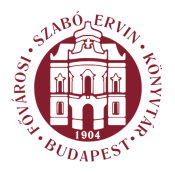Prakfalvi Endre: Roman Catholic Churches in Unified Budapest - Our Budapest (Budapest, 2003)
The Parish Church of St. Anthony and Franciscan Monastery, 1934
been motivated by financial considerations, too, as a church of a modern design required a much more modest budget than one alluding to historical styles. András Ferkai, a scholar specialising in the period, says that "with its Mediterranean atmosphere, the Pasarét church is, similarly to its more austere counterpart in Városmajor, a milestone in the history of Hungary's ecclesiastical art—it was due to the precedent set by those two buildings that modernism came to be regarded as a legitimate style of church architecture.” The flat-roofed church, whose interior was painted light brown, the colour of the Franciscan order and an expression of Evangelical poverty, was consecrated by Prince Primate Jusztinján Serédy on 14 October 1934. The church is rich in contemporary artwork—the reliefs on the main altar and the pulpit, together with the statue of St. Anthony, were made by Béla Ohmann. The sgraffiti of the chancel and the nave were made to drawings by Sándor Ungh- váry. Although art historian Ervin Ybl appreciated the munificent idealisation characterising the painter's figures, he believed that it would have been more effective to employ more "etherial creatures" in accordance with the style of the building, and emphasised the welcome effect of painterly Cubism. The stained-glass windows of the side-chapels are the work of Lili Sztehló, while their altars were made by Éva Löte and István Karla. In recent times, painter Dezső Váli made a valuable addition to the church by donating his Stations of the Cross series to the monastery, but these pictures have unfortunately been painted over. The statue on the well of the square, inner courtyard of the monastery is the work of Miklós Borsos. On the two sides of the portico there are low reliefs showing the greatest saints of the Franciscans, St. Francis of Assisi and St. Anthony of Padua (1195-1231), sculpted by Tibor Vilt. The figure of the wolf beside Francis is a reference to the legend in which the saint persuaded the ferocious wolves threatening the citizens of Gubbio to leave. Another reminder of the miraculous efficacy of the word are the fish at the foot of Anthony—unlike the inhabitants of Rimini, these witless fish attended to the sermon of the saint. In the centre of the square outside the church there stands a well statue of the Madonna (Sándor Boldogfai Farkas, 1939). Designed by Rimanóczy, the bus station providing the square with an arched closure is also in Modernist style (1937), and thus forms an integral unit with the church. The two are now under protection as part of the country's architectural heritage. (Another church built by Rimanóczy to honour St. Anthony stands in Bos- nyák tér, District XIV. It was built between 1941 and 1948.) 58
